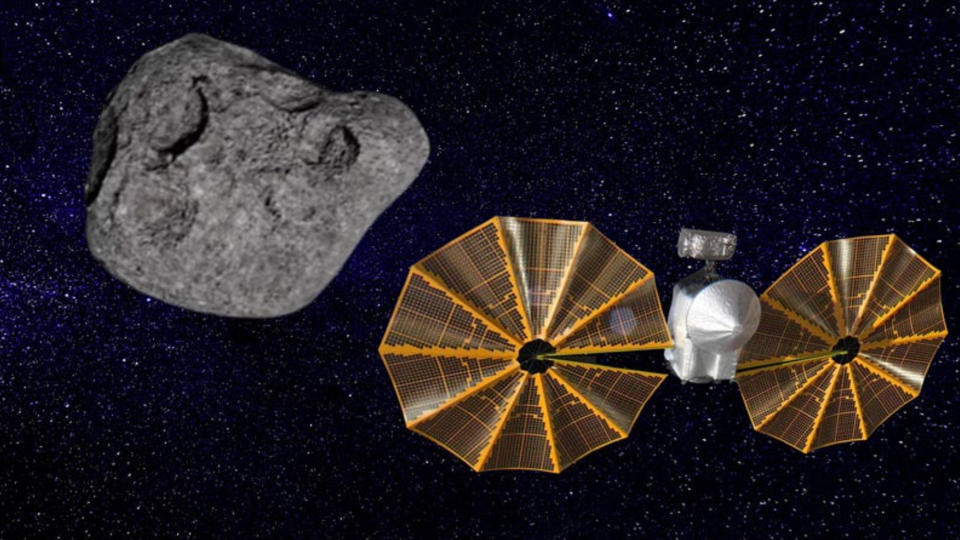NASA's Lucy spacecraft successfully completes 1st flyby of asteroid 'Dinky'

On Nov. 1, NASA confirmed its Lucy spacecraft successfully completed a flyby of asteroid Dinkinesh, a relatively small space rock located in the main belt between Mars and Jupiter. This marks a milestone in Lucy's journey, as Dinkinesh, or 'Dinky,' is the first of 10 asteroids the probe will visit over the next 12 years.
"Based on the information received, the team has determined that the spacecraft is in good health," NASA officials wrote in a blog post after the flyby occurred. "The team has commanded the spacecraft to start downlinking the data collected during the encounter."
In a nutshell, the Lucy mission is part of NASA's ambitious endeavor to unveil secrets of our solar system's past. Though Lucy will also be passing by a few relatively nearby asteroids like Dinky, the probe's main goal is to fly by a few more distant Trojan asteroids orbiting the sun alongside Jupiter like bundles of pebbles bound to the gravitational tides of a giant boulder. Scientists are interested in learning more about those Trojans because they're believed to be ancient relics of the solar system, like extra Lego bricks from the box that built the planets.
Related: NASA's LUCY mission snaps its asteroid targets for the 1st time

Lucy's flyby of Dinkinesh can be thought of as a test-run in this regard, as many of the spacecraft's instruments have now been oiled while collecting data about this first asteroid encounter — including a color imager, high-resolution camera and infrared spectrometer.
According to the blog post, data from these tools will take about a week to be downlinked to Earth, and the team is "looking forward to seeing how the spacecraft performed during this first in-flight test of a high-speed asteroid encounter."
Related Stories:
— Meet Dinkinesh: Asteroid targeted by NASA's Lucy spacecraft gets a marvelous name
— The moon is enchanting in new photos from NASA's Lucy asteroid mission
— NASA's Lucy asteroid mission adds 10th space rock target

Next, Lucy will head back to Earth for a gravity assist that'll help it zoom toward its second asteroid target: 52246 Donaldjohanson — named after co-discoverer of the Lucy fossil (representative of one the earliest human ancestors, for which the spacecraft is named), American paleoanthropologist Donald Johanson. And if you were wondering, "Dinkinesh" is just another title for the Lucy fossil.
It also means "you are marvelous," as you are, Lucy.

